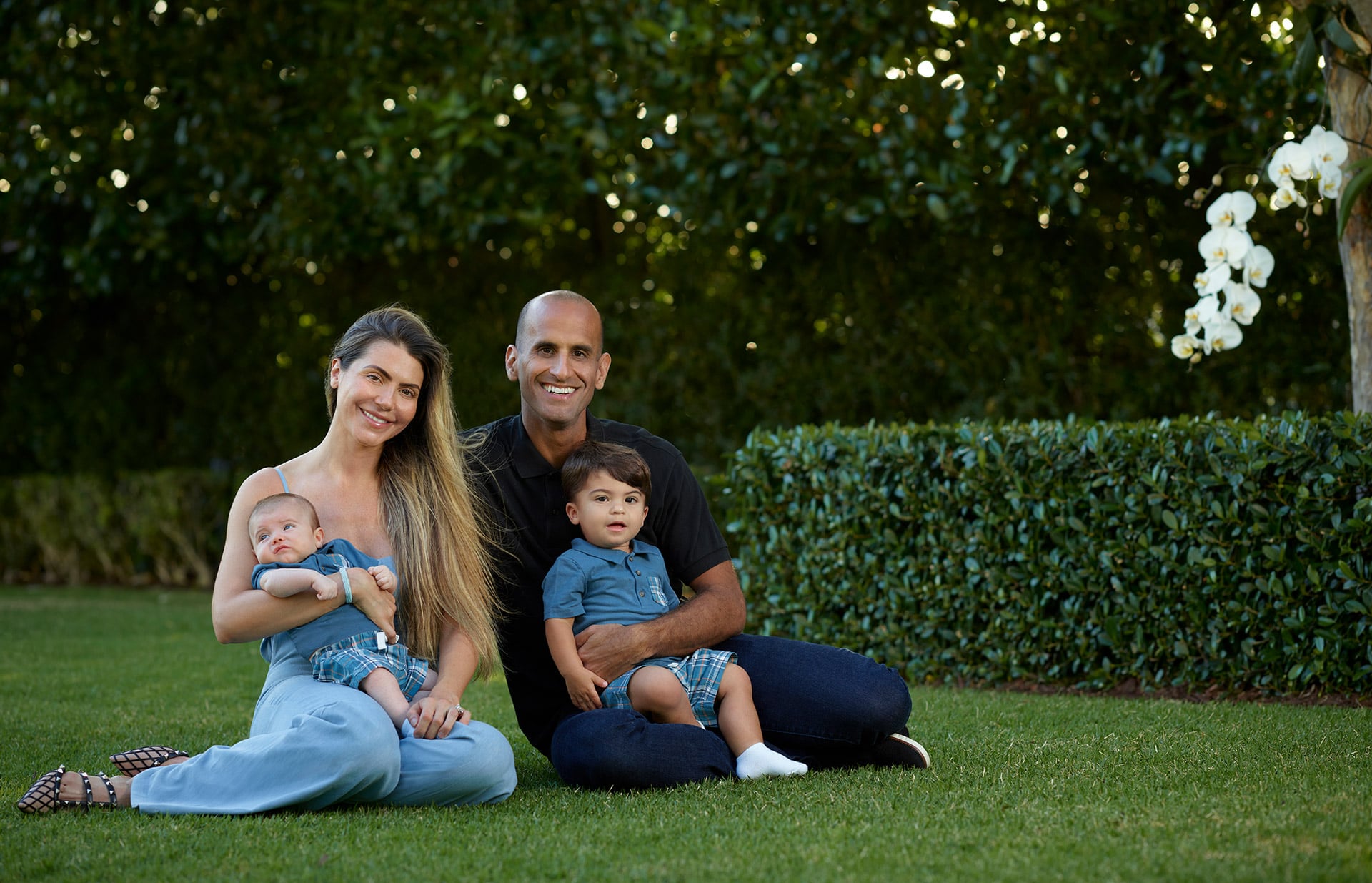Seeking Answers for an Ultra-Rare Disease
One family’s gift could help shed light on, and develop potential treatments for, a genetic disorder
By Elaine Zeinner
Photography by Jeffrey Salter

Ibrahim and Ryann Al-Rashid
L
ike all parents, Ibrahim and Ryann Al-Rashid wanted answers when they learned their son had a genetic disorder. The challenge for the Al-Rashids was that answers weren’t forthcoming. It took more than a year for the family to learn the name of the condition that affects their oldest child: geleophysic dysplasia (GD).
An ultra-rare genetic disorder, GD is an inherited condition that affects many parts of the body, including the bones, joints, heart, skin, kidneys, liver, and lungs. It is such a rare condition that it’s uncertain how many people are affected.
“My son is obviously very dear to me,” Ryann said. “I love him more than anything in the world. Learning that he had this genetic condition was the worst news we could hear. We are very health conscious. We have a lot of love and are spiritual people. We didn’t understand how this was happening, but we really tried to see the positive and all that God and the universe have blessed us with.”
For the Al-Rashid family, that meant doing what all parents do in similar situations: fight and find answers and hope for their son. Along with other family members, Ibrahim and Ryann provided critical funding to the University of Miami Leonard M. Miller School of Medicine for research in genetics and rare diseases, specifically GD.
Mustafa Tekin, M.D., chief of clinical and translational genetics at the Miller School, leads the research.
“We are trying to understand the disease’s mechanisms and the biology. From that, we hope to develop research studies for future development of potential treatments,” said Dr. Tekin, who is a professor in the Dr. John T. Macdonald Foundation Department of Human Genetics, recently ranked #2 in the nation in NIH funding for genetics.
Ryann is clear on her hopes for the research.
“I’m looking for a miracle,” she said. “Dr. Tekin is an amazing doctor. He spent hours upon hours researching and studying this disease and communicates those findings to us.”
Ibrahim agreed.
“This is our moon shot to find a cure and answers for not only my son, but other families impacted by GD and similar genetic diseases,” he said.
Giving back is a family affair
It’s not surprising the Al-Rashids turned to the Miller School. Ibrahim’s family has a long relationship with the medical school and university. They’ve supported many causes, funded research projects, and even established the Orbital Vision Research Center at the Bascom Palmer Eye Institute at the Miller School.
Not to mention, Ibrahim and his brother are proud UM alumni.
“We’ve fostered our relationship with the University of Miami over the past 30 years,” Ibrahim said. “Miami is home for us. I live here, and I met my wife here. Our sons were born just down the street at Jackson Memorial Hospital. It just feels right to be partnering with UM on this project.”

Searching for hope
There are thousands of rare diseases. But because some of them affect so few people, there’s not much funding to better understand them. That is something the Al-Rashids and Dr. Tekin want to change with GD. Additionally, the work in Dr. Tekin’s lab may translate to other rare diseases.
“GD is a group of rare diseases that affect the extracellular matrix,” Dr. Tekin said. “If you look at them on a larger scale, there are other, similar diseases that affect even more patients. Certainly, our understanding of GD will have a positive impact on other diseases that are under-studied as well.”
This study allows researchers to search for GD answers and help put the infrastructure in place to develop clinically useful treatments. Dr. Tekin and his team will be evaluating gene therapy with the hope of finding a cure.
“Gene-based therapy is something being done right now for quite a few rare diseases,” Dr. Tekin said. “It’s our hope that by studying GD as a model, we may gain insight on whether gene editing could potentially be an option for this group of disorders.”
The research team will also be looking at medicines already approved by the U.S. Food and Drug Administration that may help manage symptoms and side effects of the disease.
Both these developments will take years to realize fully. In the meantime, the UM team hopes to gather data from families and individuals affected by GD about their experience with the disease — from symptom onset to complications and more. Families and providers worldwide will be invited to participate in this first-of-its-kind registry for GD.
“This knowledge is essential to understanding if a treatment or therapy is effective at helping individuals manage complications,” Dr. Tekin said.
Ryann and Ibrahim know they will not have answers overnight, but they do recognize the hope Dr. Tekin’s work will offer their family and many others. Ryann is involved in a Facebook community of families affected by GD and similar diseases — one of the only groups she could find on her son’s condition.
“We’re constantly talking and sharing information in the Facebook group because there’s so little anyone knows about GD and its related conditions,” Ryann said. “We learn from each other. It can be a sad place, but we really want other families to feel hope again.”
“The hopelessness of this rare disease stops today because now, something is being done about it,” Ibrahim added.
If you, or a family member, have been diagnosed with geleophysic dysplasia and would like to provide the Al-Rashid family and the University of Miami with more information on this condition, please call 305-243-2381.![]()


